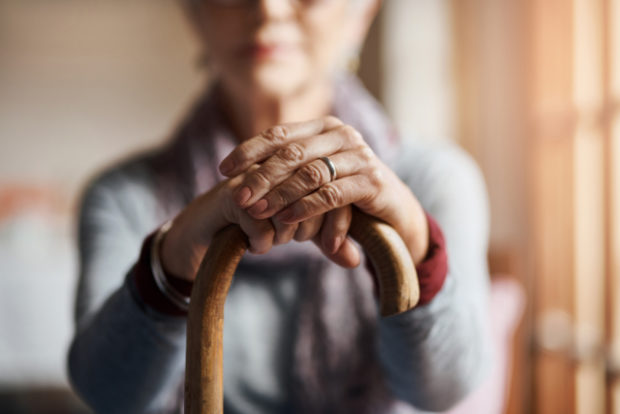New European research has found that as walking ability declines with age, changing one’s walking speed, taking more breaks or using walking aids could help the elderly get around and stay more active.

Image: Istock.com/Cecilie_Arcurs via AFP Relaxnews
Carried out by researchers at the University of Jyväskylä, Finland, the new study looked at 761 Finnish seniors between the ages of 75 and 90, and followed them for two years.
The participants were asked at the start of the study and at the two-year follow-up, if they had taken any measures to adapt their way of walking due to their health, to enable them to walk a distance of 2 kilometers.
Based on their responses, the researchers grouped the participants into three categories: no walking modifications, adaptive modifications (such as walking more slowly, pausing for rest and using an aid) and maladaptive walking modifications (reducing the frequency of walking or giving up walking longer distances).
The findings, published in The Journals of Gerontology: Series A, showed that participants who used maladaptive walking modifications reported the most restricted mobility and autonomy in their ability to get around outdoors. These participants were also the least likely to meet their physical activity needs at the start of the study and showed the greatest decline over time.
Those who used no walking modifications at the start of the study were the most mobile and showed no change over the two years.
Participants who used adaptive walking modifications resembled those who used no modifications at the start of the study, although their outdoor mobility declined over time.
The researchers commented that the findings suggest that adopting adaptive modifications may postpone decline in outdoor mobility, whereas using maladaptive modifications result in a negative effect.
“We wanted to find out if some of these changes in walking would be beneficial in maintaining outdoor mobility,” said study author Heidi Skantz. “Changes may be seen, for instance, in lowering walking speed, pausing walking for rest or even in avoiding long walking distances altogether. These early changes in walking are called walking modifications.”
“Those older people who used maladaptive walking modifications had smaller life-space mobility and they perceived that they lacked possibilities for outdoor mobility,” added Skantz. “As for those older people who had chosen to utilize adaptive walking modifications, they were able to maintain wider life-space mobility and they were also satisfied with their outdoor mobility opportunities.”
“Encouraging older people to opt for adaptive walking modifications might be possible by designing age-friendly environments, for instance by providing opportunities to rest when walking outdoors. However this warrants further studies,” Skantz stated. RGA/JB
RELATED STORIES:
Exercise, even in small doses, has big benefits for seniors
Exercise could slow down effects of Alzheimer’s in high-risk individuals